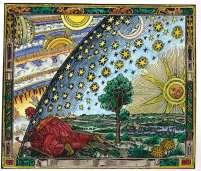The theory of relativity predicts that, as it orbits the Sun, Mercury does not exactly retrace the same path each time, but rather swings around over time. We say therefore that the perihelion -- the point on its orbit when Mercury is closest to the Sun -- advances.
Imagine for a moment about that such a "momentus occasion", as well we learn to see the developmental process of circles(orbits) and Mercuries orbital patterns (a daisey) and got this general sense of reduced orbital pattern decay of rotatng binary pulsar systems as revealled by Taylor and Hulse.
We got to know "information release" from the distances involved, and could calculated when they would combined? This is a "prediction then" based on, a viable measure, not only in terms of that distance valuation, but of how we might arrive at it other then in astronmical viewing. What would be revealled in LIGO application?
Atiyah's comments are important here I think.
If theory is the role of the architect, then such beautiful proofs are the role of the craftsman. Of course, as with the great renaissance artists, such roles are not mutually exclusive. A great cathedral has both structural impressiveness and delicate detail. A great mathematical theory should similarly be beautiful on both large and small scales.
Assymetrical views would have revealled mandalic interpretations very distinctive of conscious awareness, and unfoldment in design. This had to have a geometric and foundational perspective that arose from the expansitory valution of brane world idealizations? As well as, the deeper recesses of our own minds?
Finally, we also hope that this series furthers the discussion regarding the nature and function of 'the mandala'. In the spiritual traditions from which Jung borrowed the term, it is not the SYMMETRY of mandalas that is all-important, as Jung later led us to believe. It is their capacity to reveal the asymmetry that resides at the very heart of symmetry. By offering a new view about how consciousness itself is structured - in a fundamentally paradoxical fashion - and how these structurings are reflected in principles according to which the mandala is organized, we are able in this series to show how personality itself may be thought of as having an essentially 'liminocentric' design.
One had to be able to recognize this "model apprehension" and speak to it directly in experience. I could do that because of my explorations. Am I adapting to new methods of model developements? For sure. :)

"Luminousity" as enlightenment could possibly help push back the veil, if we could probably do this?

No comments:
Post a Comment